News
Tenerife Turtles – Small Expectations, Great Rewards
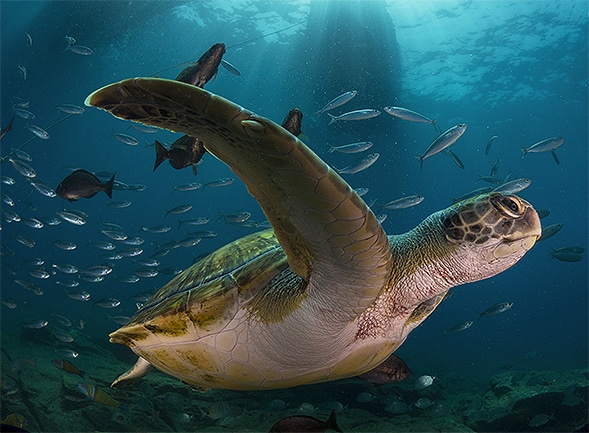
The first post from our latest travel and photo contributor Sean Chinn. Welcome to Scubaverse Sean!
It’s no great secret that for UK based divers and underwater photographers who want truly out of this world wildlife diving, you usually have to dig deep in your pocket and be prepared for a long journey with great expectations. But what about photographing exotic wildlife in warm seas, a flight no more than 5 hours away and a trip that’s kind to your bank balance?

Well at this point you’d normally expect me to say head down to The Red Sea. But not this time, this time I’m going to point you in the direction of a small volcanic Island in the Atlantic Ocean that is part of Spain.
Tenerife is a holiday destination popular with UK families and groups looking for a relatively inexpensive holiday with guaranteed beautiful, sunny weather. One of the main reasons I found myself travelling here with my family in the Summer of 2017.
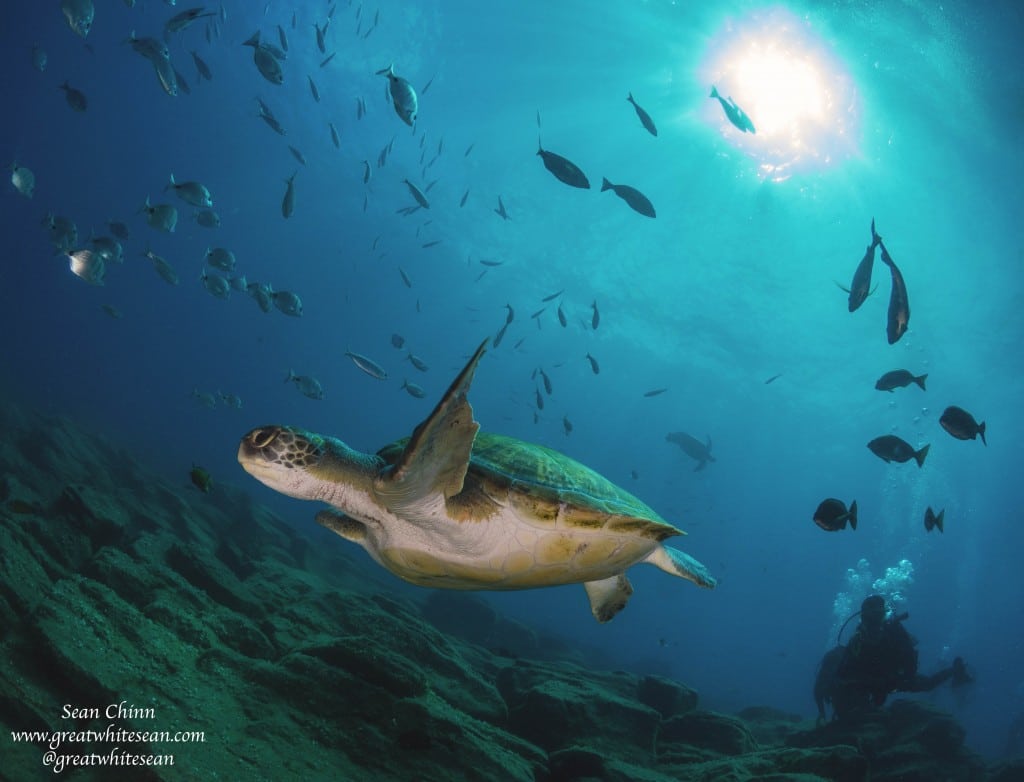
I’ve recently welcomed my first child towards the end of 2016 and it was time to organise a family holiday but with a little diving fun for daddy! Tenerife was the destination of choice and early August was the time. The lure of maybe being able to get close shots of turtles being a deciding factor. Also, if I could introduce family members to the world I love and get them snorkelling with some exotic marine animals such as turtles, it would be another bonus.
I’d heard stories and saw photos of Green Sea Turtles in Tenerife but I wasn’t sure how much of a guarantee it was that I would actually get the same opportunities. I did some research and got in touch with a Tenerife-based photographer by the name of Montse Grillo. She has some truly stunning shots of turtles around Tenerife and I knew she would be able to help. Although Montse doesn’t speak much English, I am grateful for the time she took to Google Translate my message and point me in the direction of the dive shop: Club de Buceo Rincon de Arona.
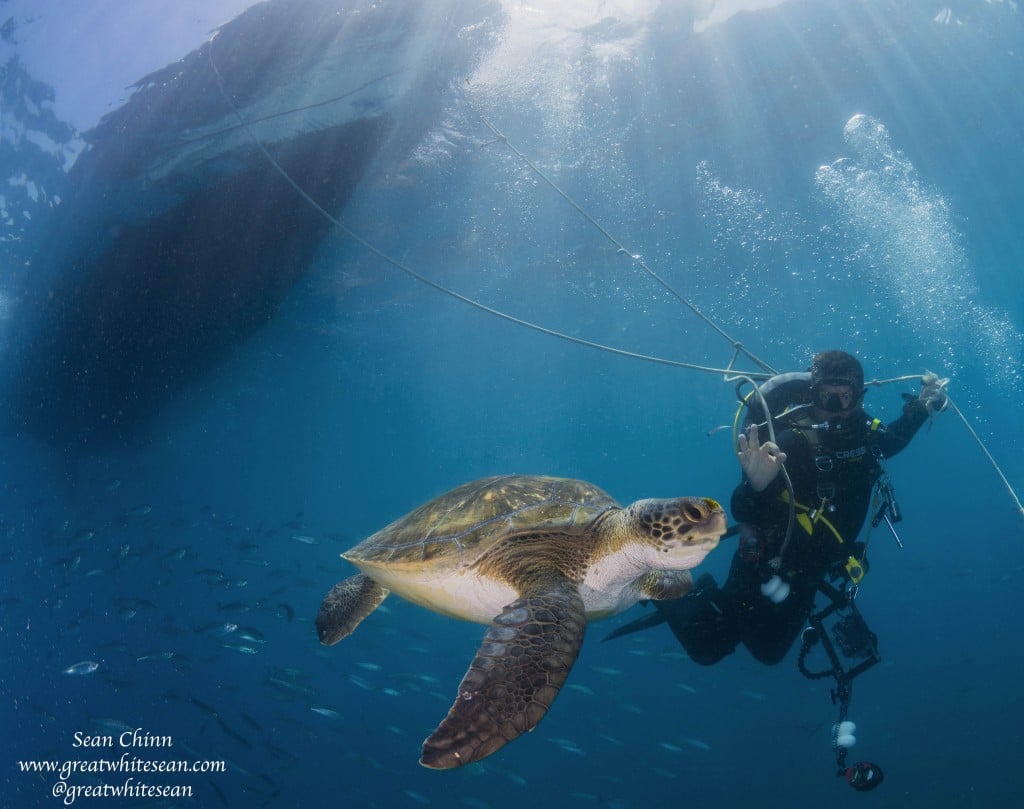
Javier was the owner/dive guide and promised me turtles, as well as some big rays. He is a keen underwater photographer himself, so knows exactly what I am looking for when it comes to getting eye-catching photos. I started the day with a macro dive seeking out the abundance of eels that call the volcanic rocks home. Then in the afternoon it was time to find some turtles. The dive site was a short boat ride of no more than five minutes from the marina at Los Cristianos and set under the backdrop of dramatic volcanic cliffs along the Southwest side of the Island. The first turtle was spotted at the surface before anchor was even dropped, always a good sign that this is going to be a good dive.
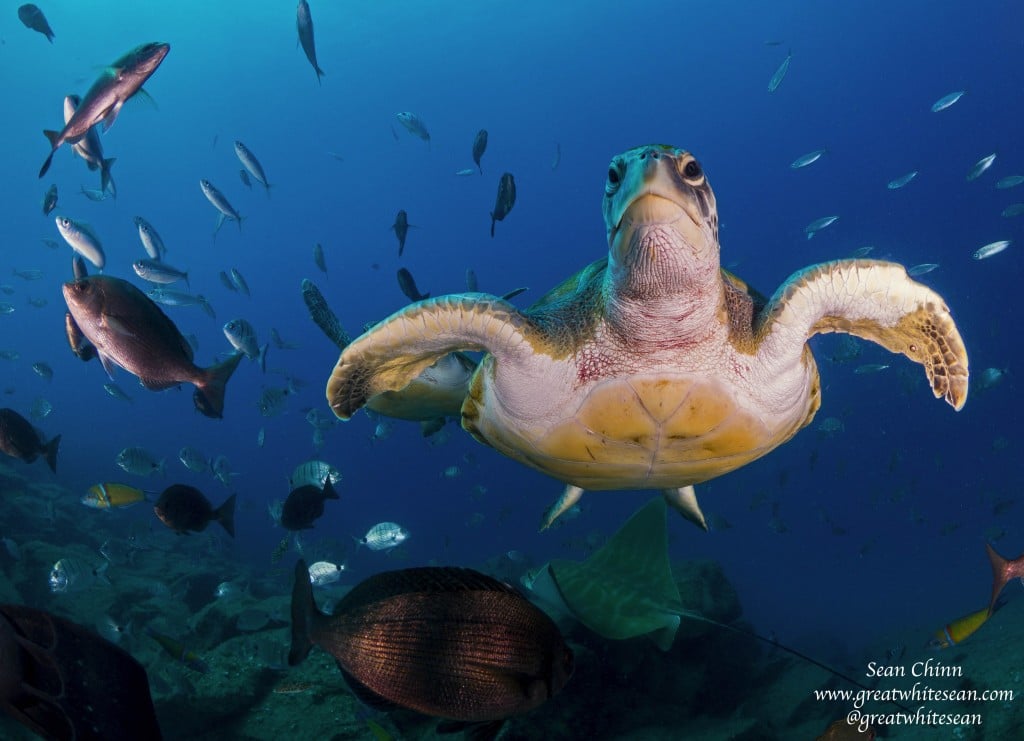
It was only a shallow dive site of around 13 metres but this gave us ample water time to get plenty of photos. I don’t know the full story of the turtles in the area but I had read they are rescue turtles that are used to human interaction and stick around for small handouts of leftover squid from the fishermen at the harbour.
The turtles were certainly bold and curious, which as any underwater photographer knows is great! “When you think you’re close, then get closer” is the general rule of thumb. There was no such worry here as I found myself backing up on numerous occasions just to get the turtles in the frame.
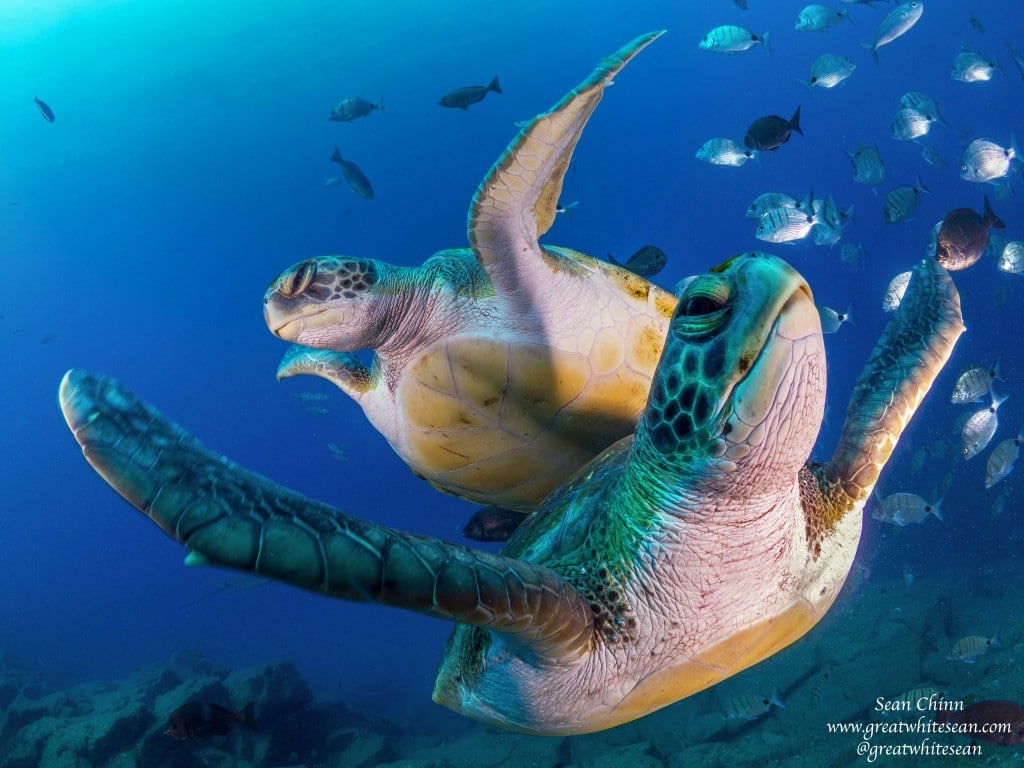
I did two dives with the turtles and rays during my holiday and both dives were equally as fun and manic as each other. There was an abundance of fish making way as the Bull Rays worked their way through. Stingrays of different sizes would also make an appearance but the turtles were the real stars.
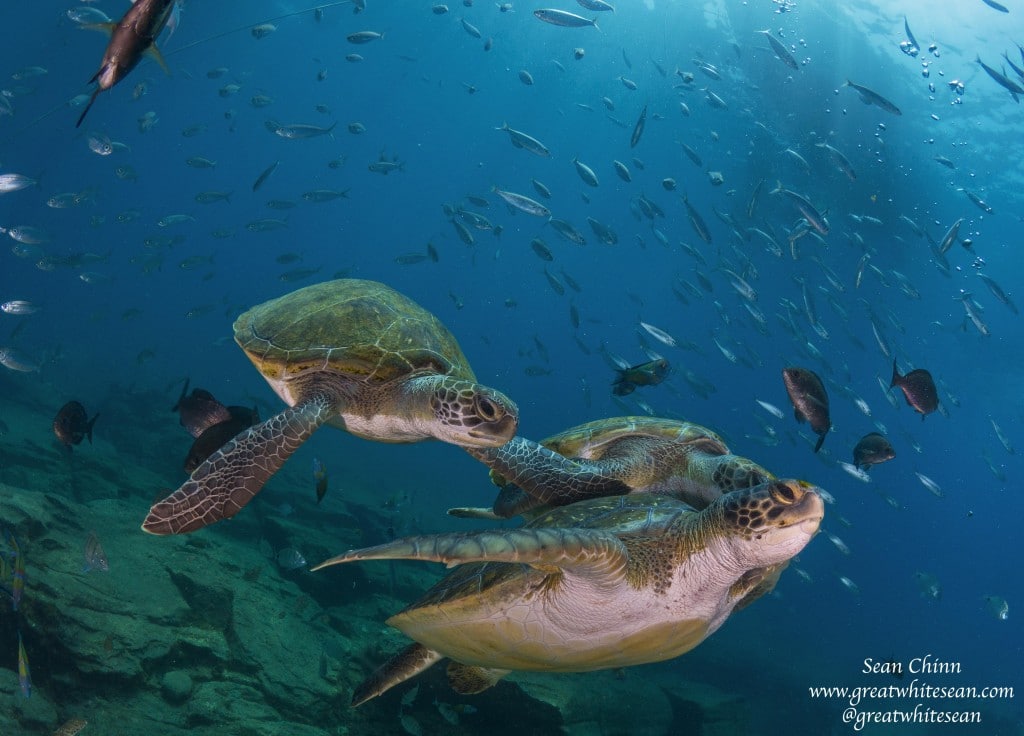
The second dive saw the introduction of a third, smaller turtle. There are normally only two turtles regularly at the dive site but my guide said out of all the photographers that he has dived with, I was probably the only one to get three turtles in the frame. I only managed the one decent shot of all three as I found myself struggling to back up enough to get them all in. It certainly made the dive extra exciting.
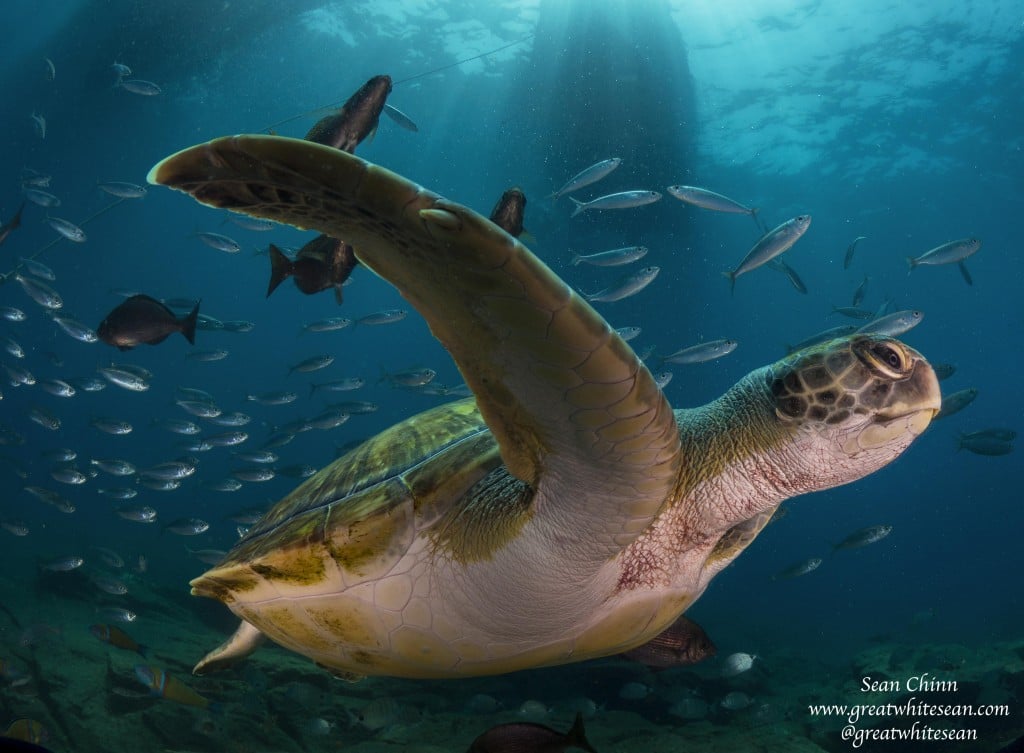
In conclusion: I wasn’t expecting much from my time underwater in Tenerife and wondered whether I’d get any decent photos. It certainly excelled my expectations and is a worthwhile dive trip to book for a cost friendly and relatively close holiday from the UK. Although I only managed four dives I was able to get many photos that were well worth keeping due to the abundance of photo opportunities. I was also able to introduce five members of my family to the joys of the ocean and get them snorkelling with turtles for the very first time. It means the world to me to share my passion with those closest to me and see how much they enjoyed the experience.
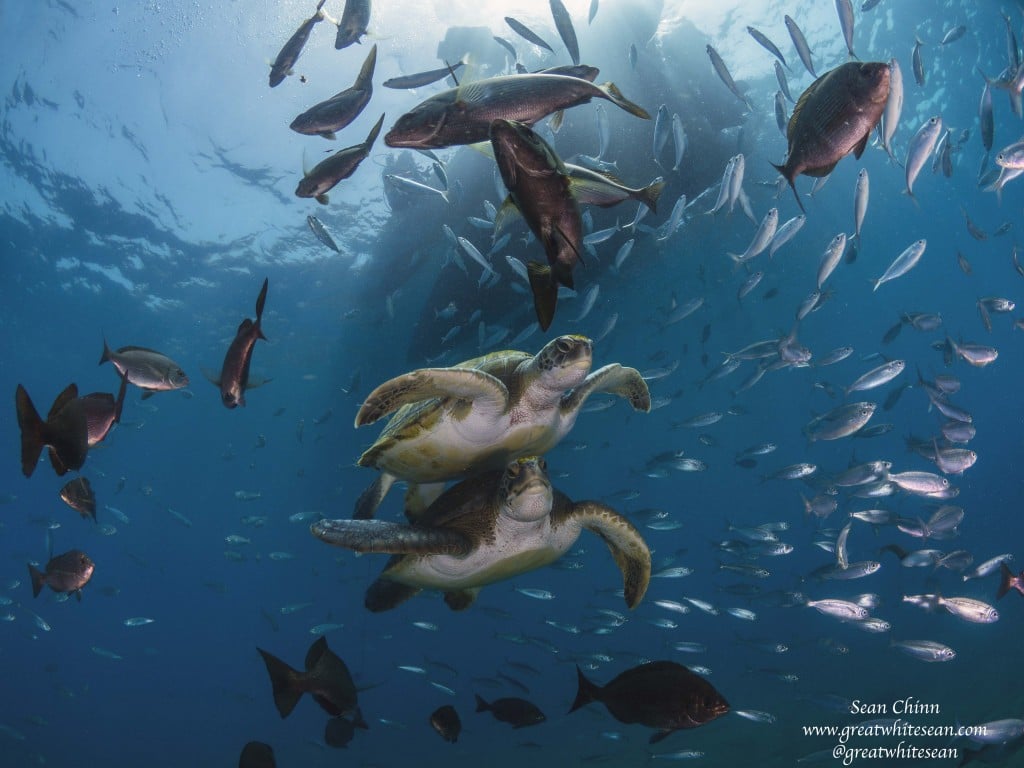
Find out more about Sean at www.greatwhitesean.com or follow him on Instagram @greatwhitesean
Blogs
Northern Red Sea Reefs and Wrecks Trip Report, Part 2: Wall to Wall Wrecks

Jake Davies boards Ghazala Explorer for an unforgettable Red Sea diving experience…
The second day’s diving was a day full of wreck diving at Abu Nuhas, which included the Chrisoula K, Carnatic, and Ghiannis D. The first dive of the day was onto the Chrisoula K, also known as the wreck of tiles. The 98m vessel remains largely intact where she was loaded with tiles which can be seen throughout the hold. The stern sits at 26m and the bow just below the surface. One of the highlights of the wreck is heading inside and seeing the workroom where the machinery used for cutting the tiles are perfectly intact. The bow provided some relaxing scenery as the bright sunlight highlighted the colours of the soft coral reef and the many reef fish.

Following breakfast, we then headed to the next wreck, which was the Carnatic. The Carnatic is an 89.9m sail steamer vessel that was built in Britain back in 1862. She ran aground on the reef back in 1869 and remains at 27m. At the time, she was carrying a range of items, including 40,000 sterling in gold. An impressive wreck where much of the superstructure remains, and the two large masts lay on the seafloor. The wooden ribs of the hull provide structures for lots of soft corals, and into the stern section, the light beams through, bouncing off the large shoals of glass fish that can be found using the structure as shelter from the larger predators that are found outside of the wreck.

The final wreck at Abu Nuhas was the Ghiannis D, originally called ‘Shoyo Maru,’ which was 99.5m long and built in Japan back in 1969 before becoming a Greek-registered cargo ship in 1980. The ship then ran aground on the reef on April 19th, 1983, and now sits at the bottom at a depth of 27m. Heading down the line, the stern of the ship remains in good condition compared to the rest of the hull. The highlight of the wreck, though, is heading into the stern section and down the flights of stairs to enter the engine room, which remains in good condition and is definitely worth exploring. After exploring the interior section of the ship, we then headed over to see the rest of the superstructure, where it’s particularly interesting to see the large table corals that have grown at the bow relatively quickly considering the date the ship sank. After surfacing and enjoying some afternoon snacks, we made sure everything was strapped down and secured as we would be heading north and crossing the Gulf of Suez, where the winds were still creating plenty of chop.

The next morning, it was a short hop to Ras Mohammed Nature Reserve for the next couple of days of diving. The 6am wake-up call came along with the briefing for the first site we would be diving, which was Shark & Yolanda. The low current conditions allowed us to start the dive at Anemone City, where we would drift along the steep, coral-filled wall. These dives involved drifts, as mooring in Ras Mohammed wasn’t allowed to protect the reefs. As a dive site, Shark & Yolanda is well-known and historically had a lot of sharks, but unfortunately not so many in recent years, especially not so early in the season. However, there was always a chance when looking out into the blue.

The gentle drift took us along the steep walls of the site, with plenty of anemone fish to be seen and a huge variety of corals. It wasn’t long into the dive before we were accompanied by a hawksbill turtle, who drifted with us between the two atolls before parting ways. Between the two reefs, the shallow patch with parts of coral heads surrounded by sand provided the chance to see a few blue-spotted stingrays that were mainly resting underneath the corals and are always a pleasure to see. With this being the morning dive, the early sunlight lit up the walls, providing tranquil moments. Looking out into the blue, there was very little to be seen, but a small shoal of batfish shimmering underneath the sunlight was a moment to capture as we watched them swim by as they watched us.

Towards the end of the dive, we stopped at the wreck of the Jolanda where the seafloor was scattered with toilets from the containers it was carrying. This provided a unique site to make a safety stop, which was also accompanied by a large barracuda slowly swimming by, along with a hawksbill turtle calmly swimming over the reef as the sun rays danced in the distance.
For the next dive, we headed north to the Strait of Tiran to explore the reefs situated between Tiran Island and Sharm El Sheik, which were named after the British divers who had found them. We started on Jackson before heading to Gordons Reef, where we also did the night dive. All the atolls at these sites provided stunning, bustling coral reefs close to the surface and steep walls to swim along, which always provided the opportunity to keep an eye out for some of the larger species that can be seen in the blue. Midwater around Jackson Reef was filled with red-toothed triggerfish and shoals of banner fish, which at times were so dense that you couldn’t see into the blue. Moments went by peacefully as we enjoyed the slow drift above the reef, watching these shoals swim around under the mid-afternoon sun.

The night dive at Gordon’s Reef was mainly among the stacks of corals surrounded by sand, which was great to explore under the darkness. After some time circling the corals, we came across what we were really hoping to find, and that was an octopus hunting on the reef. We spent the majority of the dive just watching it crawl among the reef, blending into its changing surroundings through changes in colour and skin texture. It’s always so fascinating and captivating to watch these incredibly intelligent animals, in awe of their ability to carry out these physical changes to perfectly blend into the reef. Before we knew it, it was time to head back to the boat to enjoy a well-deserved tasty dinner prepared by the talented chefs onboard.
Check in for the 3rd and final part of this series from Jake tomorrow!
To find out more about the Northern Red Sea reef and wrecks itineraries aboard Ghazala Explorer, or to book, contact Scuba Travel now:
Email: dive@scubatravel.com
Tel: +44 (0)1483 411590
Photos: Jake Davies / Avalon.Red
Marine Life & Conservation
Double Bubble for Basking Sharks

 The Shark Trust is excited to announce that, for two more days only, all donations, large or small, will be doubled in the Big Give Green Match Fund!
The Shark Trust is excited to announce that, for two more days only, all donations, large or small, will be doubled in the Big Give Green Match Fund!
Donate to Basking in Nature: Sighting Giants
The Shark Trust is hoping to raise £10k which will be doubled to £20k. This will go towards Basking in Nature: Sighting Giants. And they need YOUR help to reach they’re goal.
The Shark Trust’s citizen science project is to monitor and assess basking sharks through sightings; encouraging data collection, community engagement, and promoting nature accessibility. This initiative aims to enhance health and wellbeing by fostering a deeper connection with British Sharks.
Campaign Aims
- Increase citizen science reporting of Basking Sharks and other shark sightings to help inform shark and ray conservation.
- Provide educational talks about the diverse range of sharks and rays in British waters and accessible identification guides!
- Create engaging and fun information panels on how to ID the amazing sharks and rays we have on our doorstep! These can be used on coastal paths around the Southwest. With activities and information on how you can make a difference for sharks and rays!
- Promote mental wellbeing through increasing time in nature and discovering the wonders beneath the waves!
Donate, and double your impact. Click Here
-

 News3 months ago
News3 months agoHone your underwater photography skills with Alphamarine Photography at Red Sea Diving Safari in March
-

 News3 months ago
News3 months agoCapturing Critters in Lembeh Underwater Photography Workshop 2024: Event Roundup
-

 Marine Life & Conservation Blogs2 months ago
Marine Life & Conservation Blogs2 months agoCreature Feature: Swell Sharks
-

 Blogs2 months ago
Blogs2 months agoMurex Resorts: Passport to Paradise!
-

 Blogs2 months ago
Blogs2 months agoDiver Discovering Whale Skeletons Beneath Ice Judged World’s Best Underwater Photograph
-

 Gear Reviews2 months ago
Gear Reviews2 months agoGear Review: Oceanic+ Dive Housing for iPhone
-

 Marine Life & Conservation2 months ago
Marine Life & Conservation2 months agoSave the Manatee Club launches brand new webcams at Silver Springs State Park, Florida
-

 News3 months ago
News3 months agoWorld’s Best Underwater Photographers Unveil Breathtaking Images at World Shootout 2023

















